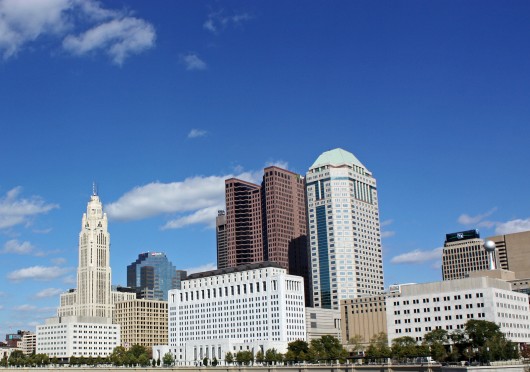Soon-to-be Ohio State graduates could have more of a reason to stick around Columbus than college nostalgia.
Ohio’s capital was recently announced as the No. 1 city for making a mark, by a recent Forbes ranking of the top cities for opportunity in the nation.
The ranking, which was published in September, was produced in collaboration with Sperling’s Best Places as part of a list ranking the 19 Opportunity Cities in America. The Forbes ranking was based on factors including median house prices, population size, unemployment ratings and population age.
The Forbes article said resources like OSU, a thriving arts and cultural scene and a top-tier hospital make Columbus a city where people can begin their career and lives.
“We’re not just dependent on one or two or three industries,” said Quinten Harris, the deputy director of economic development for the City of Columbus. “From fashion to technology to government to education to manufacturing, with banking and insurance, all this diversity makes us a great opportunity city.”
These factors are enticing not only to industries, but also to a younger population of students and recent graduates, said Irene Alvarez, a spokeswoman for Columbus 2020, an economic, nonprofit development organization that works toward goals such as adding jobs in Columbus by the year 2020.
“We’re younger than the national average. We have a lower median age and that’s fueled by the young and smart population that comes out of universities like Ohio State,” Alvarez said.
People ages 25-39 made up 26.7 percent of Columbus’ population in 2012, the article said.
Harris agreed that the city’s success can in-part be attributed to a youthful population that universities like OSU attract, as well as OSU’s long-term relationship with industries amid the Columbus region.
OSU’s reputation for research, quality education and sports traditions gives the city of Columbus attention that it might not otherwise garner, Harris said. The presence of universities like OSU in the Columbus region also provides a direct pipeline to the growth and sustainability of a sound job market and workforce, he said.
“Ohio State — being located in the city — provides us with some invaluable marketing that we could quite frankly not otherwise pay for as a city,” Harris said. “Ohio State is right in the middle and is what I call a validator in the respect that we actively attract (large companies).”
Many of the ranking’s featured cities that were named because of their size, both small enough to not overwhelm people by the bustle of urban life and large enough to offer attractions such as museums and parks, according to the Forbes article. Other cities to make the list include Rochester, N.Y., at No. 2, Pittsburgh at No. 3 and Toledo at No. 4.
“Because of the diversity of amenities that we have, whether it’s a world class zoo, a world class university like Ohio State, places like the Short North, the parks system that we have, it provides almost every environment a person would want in one geographical location,” Harris said. “You don’t have to go to Chicago or New York. We have a little bit of a lot for everyone.”
Some OSU students agreed.
“I don’t think it’s hard to find a job (in Columbus) because Columbus and Ohio in general are well-located between a lot of major markets,” said Collin Stewart, a fourth-year in finance. “We have a really vibrant cultural scene. I definitely think that’s a draw for young people.”
Yet, the large OSU student body size might be a source of stiff competition if too many OSU graduates choose to stay in Columbus following graduation, said Alisha Lad, a fourth-year in molecular genetics.
“That puts pressure on resources and jobs in Columbus,” Lad said. “To balance the number of students, there has to be an equal demand on companies to hire.”
But Alvarez said with a job market that is strong, opportunities are available for people at every rung of the ladder.
Although Alvarez admitted that the goals of the organization are “bold,” she said there is strong potential that Columbus will among the top cities for job creation by the year 2020.
“The Columbus Region has added more than 98,000 new jobs since 2010,” Alvarez said. “If we keep pacing like we are now, not only are we going to reach those goals, but we are going to far surpass those goals.”
She also said it is important that Columbus 2020 aims to make economic growth that will be sustainable both now and in the future.
“This is a place where you can make your mark. Not only can you achieve it here, but you can achieve it here faster. Columbus is creating its story now,” Alvarez said. “We are in the middle of a really remarkable time and as we look ahead, it’s only getting better.”



